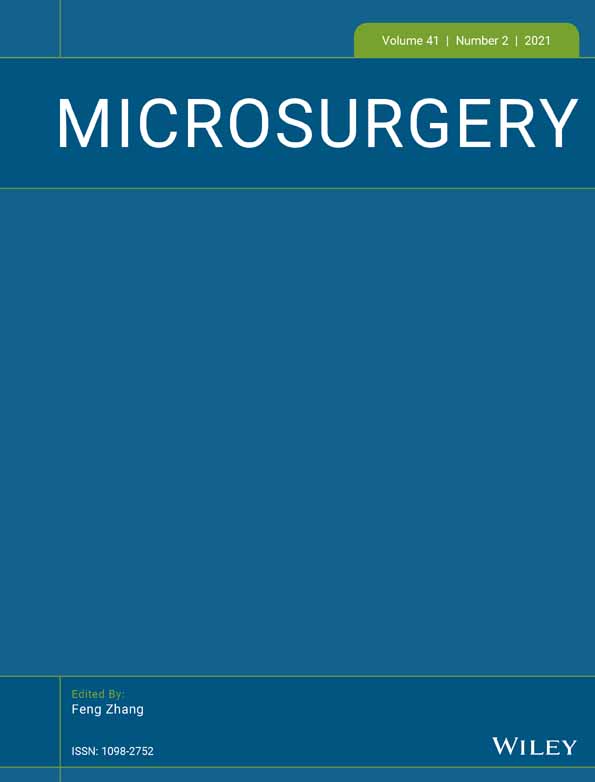Effect of vascularized periosteum on revitalization of massive bone isografts: An experimental study in a rabbit model
Funding information: Fundación Mutua Madrileña, Grant/Award Number: FFM-2012-18
Abstract
Introduction
In the last years, limb salvage has become the gold standard treatment over amputation. Today, 90% of extremity osteogenic sarcomas can be treated with limb salvage surgery. However, these reconstructions are not exempt from complications. Massive allografts have been associated to high risk of nonunion (12–57%), fracture (7–30%) and infection (5–21%). Association of vascularized periosteum flap to a massive bone allograft (MBA) has shown to halve the average time of allograft union in clinical series, even compared to vascularized fibular flap. Creeping substitution process has been reported in massive allograft when periosteum flap was associated. However, we have little data about whether it results into allograft revitalization. We hypothesize that the association of a periosteum flap to a bone isograft promotes isograft revitalization, defined as the colonization of the devitalized bone by new-form vessels and viable osteocytes, turning it vital.
Materials and Methods
Forty-four New Zealand white male rabbits underwent a 10 mm segmental radial bone defect. In 24 rabbits the bone excision included the periosteum (controls); in 20 rabbits (periosteum group) bone excision was performed carefully detaching periosteum in order to preserve it. Cryopreserved bone isograft from another rabbit was trimmed and placed to the defect gap and was fixed with a retrograde intramedullar 0.6 mm Kirschner wire. Rabbits were randomized and distributed in 3 subgroups depending on the follow-up (control group: 5 rabbits in 5-week follow up group, 8 rabbits in 10-week follow-up group, 7 rabbits in 20-week follow-up group; periosteum group: 5 rabbits in 5-week follow up group, 7 rabbits in 10-week follow-up group, 7 rabbits in 20-week follow-up group). Fluoroscopic images of rabbit forelimb were taken after sacrifice to address union. Each specimen was blindly evaluated in optical microscope (magnification, ×4) after hematoxylin and eosin staining to qualitative record: presence of new vessels and osteocytes in bone graft lacunae (yes/no) to address revitalization, presence of callus (yes/no) and woven bone and cartilage tissue area (mm2) to address remodeling (osteoclast resorption of old bone and substitution by osteoblastic new bone formation).
Results
No isograft revitalization occurred in any group, but it was observed bone graft resorption and substitution by new-formed bone in periosteum group. This phenomenon was accelerated in 5-week periosteum group (control group: 49.5 ± 9.6 mm2 vs. periosteum group: 34.9 ± 10.4 mm2; p = .07). Remodeled lamellar bone was observed in both 20-week groups (control group: 6.1 ± 6.3 mm2 vs. periosteum group: 5.8 ± 3.0 mm2, p = .67). Periosteum group showed complete integration and graft substitution, whereas devitalized osteons were still observed in 20-week controls. All periosteum group samples showed radiographic union through a bone callus, whereas controls showed nonunion in eight specimens (Union rate: control group 60% vs. periosteum group 100%, p = .003).
Conclusions
Association of vascularized periosteum to a massive bone isograft has shown to accelerate bone graft substitution into a newly formed bone, thus, no bone graft revitalization occurs.




